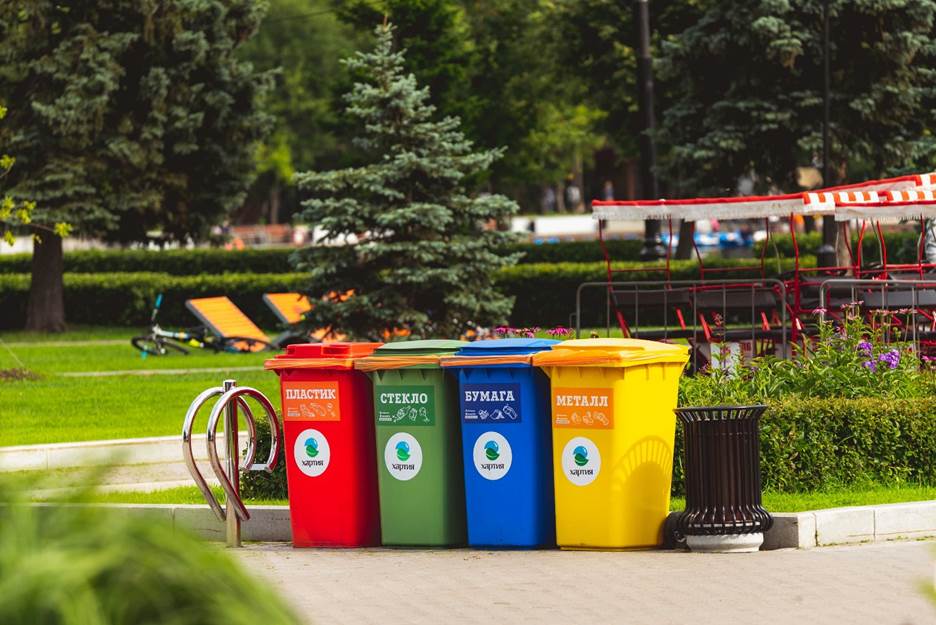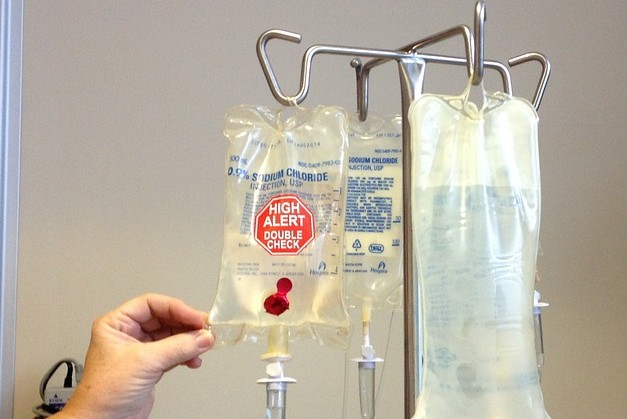Proactive Health Solutions: Choosing the very best Medical Waste Removal Near You
Wiki Article
The Value of Correct Clinical Garbage Disposal: An Overview for Health Care Facilities
Correct clinical garbage disposal is an essential aspect of medical care facility management, making sure the safety and well-being of people, personnel, and the atmosphere. From understanding the various categories of clinical waste to abiding with regulative requirements, medical care centers must take on efficient waste partition techniques and choose appropriate disposal techniques. The importance of proper clinical waste disposal goes past plain compliance; it is a duty that needs recurring training and education for personnel. In this overview, we will certainly explore the numerous facets of clinical waste disposal and highlight the crucial actions that health care centers need to take. By executing these methods, healthcare centers can minimize risks, shield public health, and add to a cleaner, more secure setting.Understanding Medical Waste Categories
Understanding medical waste classifications is critical for correct disposal in healthcare facilities. Medical waste is a broad term that incorporates various sorts of waste created in medical care settings, such as centers, research laboratories, and healthcare facilities. Classifying clinical waste assists ensure that it is taken care of, saved, and disposed of safely and in accordance with applicable regulations.There are numerous groups of clinical waste that medical care centers need to be familiar with. These categories include transmittable waste, sharps waste, pharmaceutical waste, chemical waste, and contaminated waste (medical waste disposal services with WasteX). Each classification has particular characteristics and needs various disposal methods to lessen the risk of harm to healthcare workers, individuals, and the environment
Transmittable waste, for example, refers to waste polluted with possibly transmittable products, such as blood, body liquids, and cells. Pharmaceutical waste consists of run out or extra drugs, while chemical waste is composed of dangerous chemicals utilized in medical procedures.
Conformity With Regulatory Demands
Health care facilities must ensure compliance with governing needs for appropriate medical garbage disposal. Regulatory bodies, such as the Environmental Protection Firm (EPA) and the Occupational Safety And Security and Health And Wellness Administration (OSHA), have actually developed standards and policies to guard public wellness and the atmosphere. These policies outline the appropriate handling, storage, transportation, and disposal of clinical waste.Conformity with governing demands is important for medical care facilities to prevent legal charges, reputational damages, and possible harm to human wellness and the atmosphere. Failure to abide by these policies can cause fines, legal actions, and even the suspension or abrogation of operating licenses.
To guarantee conformity, health care facilities should develop comprehensive waste monitoring programs that include team training, appropriate waste partition, and making use of appropriate containers and labels. Normal audits and evaluations need to additionally be carried out to recognize any type of non-compliance concerns and address them immediately.
It is vital for healthcare centers to keep up to date with adjustments in policies and update their waste administration practices as necessary. This can be attained by actively keeping track of updates from governing bodies and taking part in training programs and workshops.
Carrying Out Reliable Waste Partition Practices
To ensure appropriate clinical waste disposal, healthcare centers should implement reliable waste segregation techniques. Waste partition is a vital action in the overall waste administration procedure, as it assists minimize the danger of infection, stops cross-contamination, and makes certain the secure disposal of different kinds of waste. Effective waste partition techniques involve dividing clinical waste into various groups based on its attributes and prospective risks.One typical method is the partition of sharps waste, such as needles and scalpels, from various other kinds of medical waste. Sharps waste need to be put in puncture-resistant containers to avoid injuries and prospective infections. Furthermore, hazardous waste, such as pharmaceuticals and chemicals, should be separated from general medical waste to avoid ecological contamination.
Appropriate labeling and color-coding of waste containers are essential for effective waste partition. Visible and clear labels ought to be put on each container to suggest the kind of waste it contains and any type of special delivery demands - medical waste disposal services with WasteX. Furthermore, color-coding can be made use of to separate between various waste groups, making it less complicated for healthcare personnel to dispose and identify of waste correctly
Normal training and education for health care team is important for the successful implementation of waste partition practices. Team member should be informed on the various waste categories, appropriate segregation methods, and the value of complying with waste administration protocols. This will certainly help guarantee conformity and consistency in waste segregation methods throughout the facility.
Choosing Appropriate Disposal Approaches
Appropriate choice of suitable disposal techniques is important in making certain the environmentally accountable and risk-free administration of clinical waste in healthcare facilities. Healthcare facilities generate a variety of medical waste, consisting of sharps, contagious waste, pharmaceutical waste, and chemical waste - medical waste removal near me. Each sort of waste calls for certain disposal techniques to lessen the danger of contamination, injury, and ecological damageOne typical disposal method for medical waste is incineration. Incineration involves the controlled burning of waste at high temperature levels. This approach is efficient in damaging pathogens and decreasing the quantity of waste. Nevertheless, it can release damaging pollutants into the air if not correctly managed.

Chemical visit the site disinfection is another approach used for particular kinds of clinical waste, such as pharmaceutical waste. This technique makes use of chemicals to counteract or ruin pollutants. Nevertheless, it is crucial to choose chemicals that are ecologically friendly and risk-free.
In many cases, garbage dump disposal might be suitable for non-hazardous medical waste (medical waste disposal services with WasteX). Appropriate segregation and packaging are essential to avoid leak or contamination.
Ultimately, healthcare facilities have to carefully assess the characteristics of their medical waste and select ideal disposal approaches that focus on safety, ecological defense, and governing compliance. Routine training and tracking are vital to make sure that health care personnel complies with proper disposal protocols.

Training and Educating Personnel on Correct Disposal Treatments
Team education and learning and training play a crucial duty in making certain the appropriate disposal of medical waste in health care facilities. It is important that all team member, consisting of physicians, nurses, technicians, and assistance staff, obtain detailed training on correct disposal procedures. This training ought to cover the different kinds of clinical waste, their prospective dangers, and the ideal techniques for handling, setting apart, and disposing of them.One of the key goals of team education and training is to make sure that all health care professionals recognize the importance of correct disposal procedures and the prospective repercussions of inappropriate waste management. They need to be knowledgeable about the threats connected with clinical waste, such as the transmission of infections and the contamination of the setting. medical waste removal. By understanding these threats, staff participants will certainly be extra determined to follow appropriate disposal methods and take the essential safety measures to protect themselves, their associates, and the community
Training need to likewise cover making use of individual protective equipment (PPE) and the correct techniques for taking care of clinical waste. Employee should be informed on just how to identify and set apart various kinds of waste, such as sharps, infectious waste, and unsafe chemicals. They ought to additionally be educated on the proper use waste containers, such as sharps containers and biohazard bags, as well as the value of labeling and sealing these containers correctly.
Furthermore, team education and training need to include normal updates and refresher training courses to make certain that healthcare professionals stay notified regarding the most up to date regulations and best practices in clinical garbage check my source disposal. This continuous education is important to maintain a high degree of recognition and conformity amongst team member.
Final Thought
Finally, proper medical garbage disposal is of utmost importance for health care centers. Recognizing the different groups of medical waste and abiding by governing requirements guarantees the safety and health of both healthcare employees and the public. Carrying out effective waste partition techniques and selecting suitable disposal approaches are vital in stopping the spread of transmittable conditions and securing the atmosphere. Finally, training and enlightening team on proper disposal treatments is important for preserving a tidy and secure healthcare center.From recognizing the various categories of clinical waste to complying with governing demands, health care facilities must take on efficient waste partition techniques and select proper disposal techniques. These classifications consist of infectious waste, sharps waste, pharmaceutical waste, chemical waste, and radioactive waste.To guarantee correct medical waste disposal, healthcare facilities have to apply efficient waste segregation practices. Waste partition is an essential step in the total waste monitoring procedure, as it assists decrease the risk of infection, prevents cross-contamination, and ensures the safe disposal of different types of waste. Healthcare centers create a variety of medical waste, including sharps, transmittable waste, pharmaceutical waste, and chemical waste.
Report this wiki page